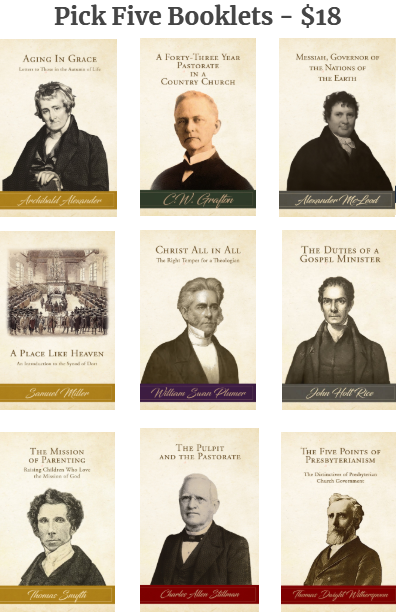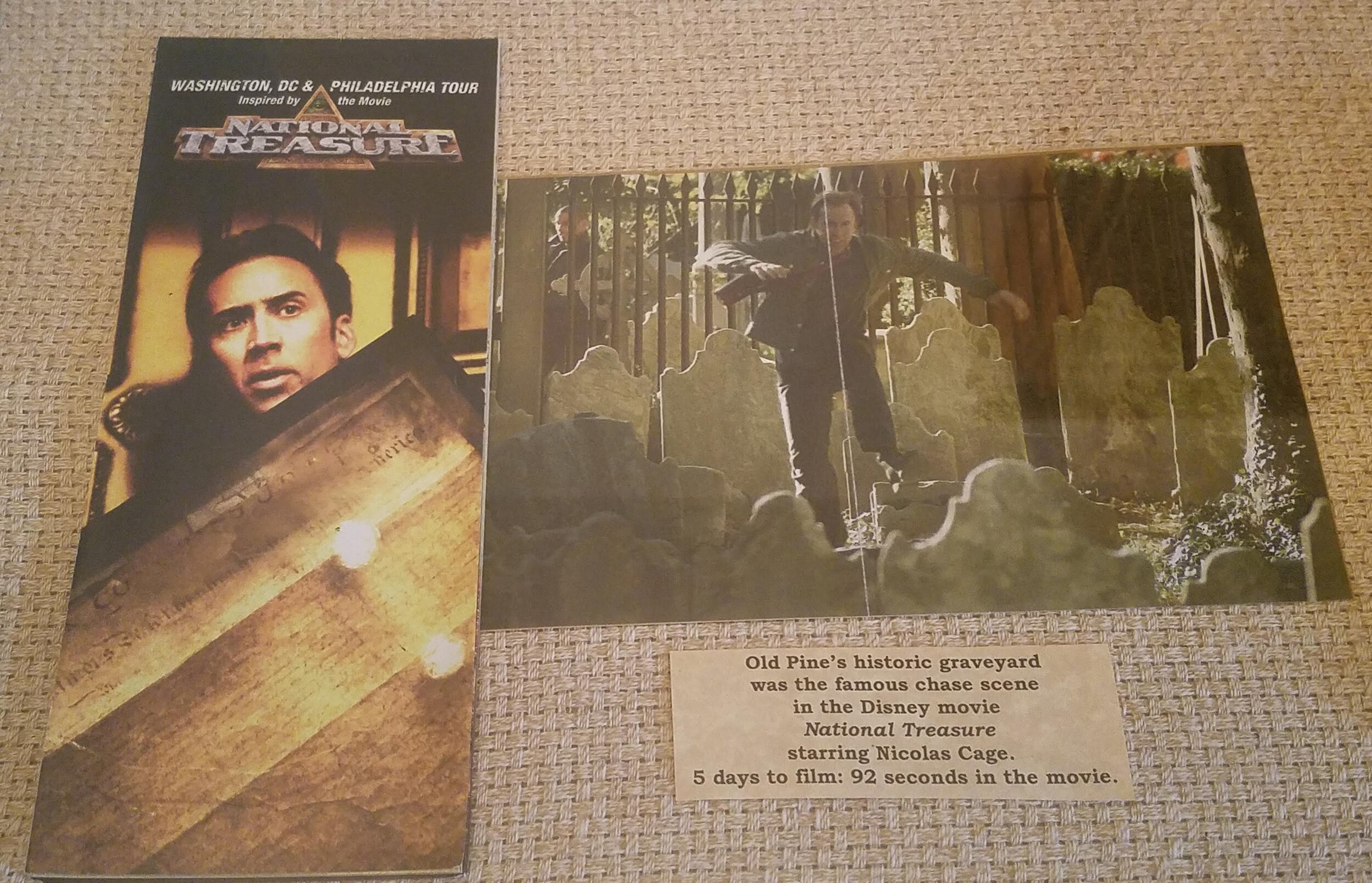Receive our blog posts in your email by filling out the form at the bottom of this page.
Early on in its history, in May 1853, a discourse was delivered at the Presbyterian Historical Society in Philadelphia, Pennsylvania by Robert B. Davidson: Presbyterianism: Its True Place and Value in History (1854). After an overview of the history of Presbyterianism in Scotland and in early America, Davidson left his hearers with a list of things things desired or wanted in connection with the goal of preserving the history of Presbyterianism - a desiderata. This list was an inspired effort to steer the work of the Presbyterian Historical Society as it began to put into practice the vision of its founder, Cortlandt Van Rensselaer.
Collections of pamphlets, tractates, controversial and other essays, bearing on the history of the Presbyterian church in this country, especially touching the Schism of 1741. These should be bound in volumes, and arranged in chronological order, handy for reference. No time should be lost in this work, for pamphlets are very perishable commodities, and speedily vanish out of sight. A copy of Gilbert Tennent’s Remarks on the Protest cannot now be obtained. One was understood by Dr. Hodge, when he wrote his History, to be in the Antiquarian Library, in Worcester, Mass., but the work is reported by the librarian as missing. This shows us that we should hoard old pamphlets and papers with Mohammedan scrupulosity, especially when there are no duplicates.
Collections, like Gillies’, of accounts of Revivals, and other memoranda of the progress of vital religion. Such collections would be supplementary to Gillies’ great work, which does not embrace the wonderful events of the present century in America.
Collections of memoirs of particular congregations, of which quite a number have been at various times printed, and which ought to be brought together and preserved.
Collections of occasional Sermons, both of deceased and living divines. As old productions are of interest to us, so such as are of recent publication may interest posterity. Such collections would furnish good specimens of the Presbyterian pulpit, and might be either chronologically or alphabetically arranged.
Collections of discourses delivered about and after the era of the Revolution. They would exhibit in a striking and favorable light the patriotic sympathies of the clergy at that period, as also the popular sentiment on the independence of the States, and their subsequent union under the present constitution.
A similar collection of Discourses preached on the day of Thanksgiving in the year 1851, would be very interesting; exhibiting the various views held on the Higher Law, and the preservation of the Union, and also the value of the Pulpit in pouring oil on the strong passions of mankind.
Biographical sketches of leading Presbyterian divines and eminent laymen. It is understood that one of our most esteemed writers is engaged in the preparation of a work of this sort, embracing the different Christian denominations. Whatever emanates from his elegant pen will be sure to possess a standard value; but it is thought, from the very structure of his projected work, such a one as is now recommended will not interfere with it, nor its necessity be superseded. Mark the stirring catalogue that might be produced, names which, though they that bare them have been gathered to their fathers, still powerfully affect us by the recollection of what they once did, or said, or wrote, and by a multitude of interesting associations that rush into the memory: Makemie, the Tennents, Dickinson, Davies, Burr, Blair, the Finleys, Beattie, Brainerd, Witherspoon, Rodgers, Nisbet, Ewing, Sproat, the Caldwells, S. Stanhope Smith, John Blair Smith, McWhorter, Griffin, Green, Blythe, J.P. Campbell, Boudinot, J.P. Wilson, Joshua L. Wilson, Hoge, Speece, Graham, Mason, Alexander, Miller, John Holt Rice, John Breckinridge, Nevins, Wirt. Here is an array of names which we need not blush to see adorning a Biographia Presbyterianiana. And the materials for most of the sketches are prepared to our hand, and only require the touch of a skilful compiler.
Lives of the Moderators. There have been sixty-four Moderators of the General Assembly; and as it is usual to call to the Chair of that venerable body men who enjoy some consideration among their brethren, it is fair to infer that a neat volume might be produced. Many were men of mark; and where this was not the case, materials could be gathered from the times in which they lived, or the doings of the Assembly over which they presided.
A connected account or gazetteer of Presbyterian Missions, both Foreign and Domestic, with sketches of prominent missionaries, and topographical notices of the stations. Dr. Green prepared something of this sort, but it is meagre, and might be greatly enlarged and enriched.
Reprints of scarce and valuable works. It may be objected that we have already a Board of Publication, who have this duty in charge; but it is not intended to do anything that would look like interference with that useful organ. The Board are expected to publish works of general utility, and likely to be popular, and so reimburse the outlay; this society would only undertake what would not fall strictly within the Board’s appropriate province, or would interest not the public generally, but the clerical profession.
A continuation of the Constitutional History of the Presbyterian Church to the present time. The valuable work of Dr. Hodge is unfinished; and whether his engrossing professional duties will ever allow him sufficient leisure to complete it is, to say the least, doubtful.
Should that not be done, then it will be desirable to have prepared an authentic narrative of the late Schism of 1838; or materials should be collected to facilitate its preparation hereafter, when it can be done more impartially than at present. Dr. Robert J. Breckinridge did a good service in this way, by publishing a series of Memoirs to serve for a future history, in the Baltimore Religious and Literary Magazine.
It might be well to compile a cheap and portable manual for the use of the laity, containing a compact history of the Presbyterian Church in America.
Other proposals on Davidson’s list include a history of the rise and decline of English Presbyterianism; a history of the French Huguenots; and a history of the Reformation in Scotland as well as biographical sketches of Scottish divines.
It is a useful exercise for those who share Davidson’s interest in church history to pause and reflect on the extent to which the goals that he proposed have been met. The Presbyterian Historical Society itself — located in Philadelphia — has certainly done tremendous legwork in this regard as a repository of valuable historical materials which has allowed scholars the opportunity to study and learn from the past. We are extremely grateful for the efforts of the Presbyterian Historical Society. Samuel Mills Tenney’s similar vision led to the creation of the Historical Foundation of the Presbyterian and Reformed Churches in Montreat, North Carolina. The PCA Historical Center in St. Louis, Missouri is another such agency that has done great service to the church at large as a repository of Reformed literature and memorabilia.
We do have access today to Gilbert Tennent’s Remarks Upon a Protestation Presented to the Synod of Philadelphia, June 1, 1741. By 1861, we know that a copy was located and deposited, in fact, at Presbyterian Historical Society. Though not yet available in PDF form at Log College Press, it is available for all to read online in html through the Evans Early American Imprint Collection here.
The biographical sketches then in progress that Davidson referenced in point #7 were carried through to publication by William B. Sprague. His Annals of the American Pulpit remain to this day a tremendous resource for students of history, yet, as Davidson wisely noted, though many writers have followed in Sprague’s footsteps on a much more limited basis, there is always room for more to be done towards the creation of a Biographia Presbyterianiana.
Regarding the Lives of Moderators (point #8), we are grateful for the labors of Barry Waugh of Presbyterians of the Past to highlight the men that Davidson had in mind. The lists and biographical sketches that he has generated are a very useful starting point towards achieving the goal articulated by Davidson, and help to bring to mind the contributions of Moderators to the work of the church.
There are a number of organizations that have taken pains to reprint older Presbyterian works of interest. Too many to list here, the contributions of all those who share this vision to make literature from the past accessible to present-day readers is to be applauded, including the efforts of Internet Archive, Google Books and others who digitize such works. We at Log College Press also strive to do this both with respect to reprints and our library of primary sources. For us, the past is not dead, primary sources are not inaccessible, and the writings of 18th-19th century Presbyterians are not irrelevant. It is worth noting that there are topical pages with growing resources available on Log College Press that highlight material on biographies, church history, the 1837 Old School / New School division, sermons and much more.
Much more could be said in regards to the extent to which organizations, historians and others have carried forward the goals articulated by Davidson. But for now we leave it to our readers to consider Davidson’s Desiderata, articulated over 150 years ago, and its connection to our shared interest in preserving the history and literature of early American Presbyterianism.












